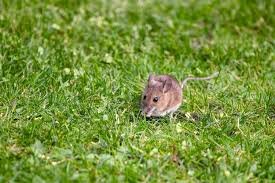Introduction

Effective mouse control is essential for every homeowner. The discovery of mice or other rodents in one’s home can be profoundly unsettling, as these resourceful pests are capable of infiltrating even the smallest openings. Seeking warmth, food, and shelter, they not only cause discomfort but also pose serious health and property risks. By understanding rodent behaviour and applying proven prevention and eradication strategies, you can protect your home and family from the dangers of infestation.
The Unwanted Houseguests: Why Mice are a Problem
Health Risks
Rodents are carriers of bacteria and viruses such as salmonella and Hantavirus. These can spread to food sources, kitchen surfaces, and equipment. Other diseases linked to rodents include Lassa fever, rat-bite fever, and typhoid. Symptoms can range from rashes and headaches to respiratory distress or worse. According to the CDC – Rodent Control and Prevention, it’s crucial to handle infestations with care to safeguard family and pets.
Property Damage
Rodents chew through wires (risking electrical fires), insulation, siding, and even vehicle parts. Nests made from shredded material or gnawed packaging are telltale signs.
Rapid Reproduction
A single pair of mice can quickly multiply, producing litters every 21 days. This rapid cycle highlights why early mouse control is critical.
Comprehensive Prevention Strategies
Blocking Entry Points
- Seal cracks and holes with steel wool and caulk
- Install door sweeps and repair screens
- Cover vents and chimneys with fine mesh
- Replace loose mortar around foundations
- Avoid spray foam—mice can chew through it
(Image idea: House diagram showing entry points — Alt: “mouse control sealing entry points in home”)
Eliminating Attractants
- Store food and pet food in airtight containers
- Fix leaks, cover drains, and remove standing water
- Keep clutter low and store firewood away from the house
- Trim bushes and cut tall grass near buildings
- Protect vehicles by parking in closed garages when possible
(Image idea: Clean kitchen with sealed containers — Alt: “mouse control food storage prevention tips”)
Sanitation Practices
Keep food prep areas spotless, remove crumbs, and disinfect nesting sites. This reduces both attractants and lingering rodent scents.
Repellent Methods: Do They Really Work?
Natural scents like peppermint oil, cayenne pepper, or vinegar may offer short-term relief, but they are not reliable long-term solutions. Ultrasonic devices are marketed as humane deterrents, but studies — and even warnings from the FTC — show limited effectiveness.
Effective Trapping Methods
Types of Traps
- Snap Traps: Quick and humane when placed correctly
- Electronic Traps: Effective, modern alternative
- Live-Catch Traps: Allow for humane release (at least 1 mile away)
- Bucket Traps: Low-cost DIY option
Trapping Best Practices
- Use peanut butter, chocolate, or nesting material as bait
- Place traps along walls with bait facing the wall
- Set multiple traps close together for best results
- Handle traps with gloves and check daily
(Image idea: Snap trap baited with peanut butter — Alt: “effective mouse control traps in kitchen”)
Rodenticides: A Cautious Approach
Rodenticides should be a last resort due to risks to pets, children, and wildlife. Always use tamper-proof bait stations and follow EPA safety guidelines. Improper use may also cause rodents to die in walls, creating odour and secondary pest problems.
When to Seek Professional Help
If infestations persist, or insulation and wiring are heavily damaged, call licensed pest professionals. They use Integrated Pest Management (IPM) methods, combining exclusion, sanitation, and safe eradication techniques for long-term results.
👉 You can also check our related guide: Signs of a Rodent Infestation You Shouldn’t Ignore.
Common Mistakes to Avoid
- Ignoring early signs such as droppings or gnaw marks
- Relying only on repellents or cheap chemical fixes
- Failing to identify and seal entry points
- Assuming mice will leave in warmer weather
- Neglecting sanitation and clutter control
Conclusion
Successful mouse control requires vigilance, prevention, and a mix of effective treatment strategies. By sealing entry points, removing attractants, and using proven traps — or consulting professionals when needed — homeowners can protect their property and family. Prioritize prevention, act quickly at the first sign of activity, and combine solutions for lasting results.





